- Home
- Philip Roth
Shop Talk
Shop Talk Read online
Shop Talk
A Writer and His Colleagues and Their Work
Philip Roth
* * *
BOOKS BY PHILIP ROTH
ZUCKERMAN BOOKS
The Ghost Writer
Zuckerman Unbound
The Anatomy Lesson
The Prague Orgy
The Counterlife
American Pastoral
I Married a Communist
The Human Stain
ROTH BOOKS
The Facts
Deception
Patrimony
Operation Shylock
KEPESH BOOKS
The Breast
The Professor of Desire
The Dying Animal
MISCELLANY
Reading Myself and Others
Shop Talk
OTHER BOOKS
Goodbye, Columbus · Letting Go
When She Was Good · Portnoy's Complaint · Our Gang
The Great American Novel · My Life as a Man
Sabbath's Theater
* * *
Houghton Mifflin Company
BOSTON · NEW YORK
2001
* * *
Copyright © 2001 by Philip Roth
All rights reserved
For information about permission to reproduce selections
from this book, write to Permissions, Houghton Mifflin Company,
215 Park Avenue South, New York, New York 10003.
Visit our Web site: www.houghtonmifflinbooks.com.
Library of Congress Cataloging-in-Publication Data
Roth, Philip.
Shop talk : a writer and his colleagues and their work / Philip Roth.
p. cm.
ISBN 0-618-15314-4
1. Authors—Interviews. I. Title.
PN452 .R68 2001
809'.045—dc21 2001024523
Printed in the United States of America
Book design by Robert Overholtzer
QUM 10 9 8 7 6 5 4 3 2 1
The conversations with the following writers first appeared in the New York Times Book Review: Primo Levi (1986), Aharon Appelfeld (1988, translation by Jeffrey Green, used by permission of Jeffrey Green), Isaac Bashevis Singer (1976), Milan Kundera (1980, translation by Peter Kussi, used by permission of Peter Kussi), Edna O'Brien (1984). The conversation with Ivan Klíma first appeared in the New York Review of Books, 1990; excerpt of Klíma's letter reprinted by permission of Ivan Klíma. "An Exchange with Mary McCarthy" first appeared in The New Yorker, 1998; McCarthy's letter reprinted by permission of the Mary McCarthy Literary Trust. "Pictures of Malamud" first appeared in the New York Times Book Review, 1986; excerpts of Malamud's letters copyright © Bernard Malamud, reprinted by permission. "Pictures by Guston" first appeared in Vanity Fair, 1989; drawings by Philip Guston reprinted by permission of Musa Mayer. "Rereading Saul Bellow" first appeared in The New Yorker, 2000.
* * *
For my friend C. H. Huvelle
1916-2000
* * *
Contents
Conversation in Turin
with Primo Levi
[1]
Conversation in Jerusalem
with Aharon Appelfeld
[18]
Conversation in Prague
with Ivan Klíma
[40]
Conversation in New York
with Isaac Bashevis Singer
about Bruno Schulz
[78]
Conversation in London
and Connecticut with
Milan Kundera
[90]
Conversation in London
with Edna O'Brien
[101]
An Exchange with
Mary McCarthy
[113]
Pictures of Malamud
[120]
Pictures by Guston
[131]
Rereading Saul Bellow
[139]
Primo Levi
[1986]
On the Friday in September 1986 that I arrived in Turin to renew a conversation with Primo Levi that we had begun one afternoon in London the spring before, I asked to be shown around the paint factory where he'd been employed as a research chemist and, afterward, until retirement, as manager. Altogether the company employs fifty people, mainly chemists who work in the laboratories and skilled laborers on the floor of the plant. The production machinery, the row of storage tanks, the laboratory building, the finished product in man-sized containers ready to be shipped, the reprocessing facility that purifies the wastes—all of it is encompassed in four or five acres seven miles from Turin. The machines that are drying resin and blending varnish and pumping off pollutants are never distressingly loud, the yard's acrid odor—the smell, Levi told me, that clung to his clothing for two years after his retirement—is by no means disgusting, and the thirty-yard Dumpster loaded to the brim with the black sludgy residue of the antipolluting process isn't particularly unsightly. It is hardly the world's ugliest industrial environment, but a long way nonetheless from those sentences suffused with mind that are the hallmark of Levi's autobiographical narratives.
However far from the spirit of the prose, the factory is clearly close to his heart; taking in what I could of the noise, the stink, the mosaic of pipes and vats and tanks and dials, I remembered Faussone, the skilled rigger in The Monkey's Wrench, saying to Levi, who calls Faussone "my alter ego," "I have to tell you, being around a work site is something I enjoy."
As we walked through the open yard to the laboratory, a simply designed two-story building constructed during Levi's managerial days, he told me, "I have been cut off from the factory for twelve years. This will be an adventure for me." He said he believed that nearly everybody once working with him was now retired or dead, and indeed, those few still there whom he ran into seemed to strike him as specters. "It's another ghost," he whispered to me after someone from the central office that had once been his emerged to welcome him back. On our way to the section of the laboratory where raw materials are scrutinized before moving to production, I asked Levi if he could identify the chemical aroma faintly permeating the corridor: I thought it smelled like a hospital corridor. Just fractionally he raised his head and exposed his nostrils to the air. With a smile he told me, "I understand and can analyze it like a dog."
He seemed to me inwardly animated more in the manner of some quicksilver little woodland creature enlivened by the forest's most astute intelligence. Levi is small and slight, though not so delicately built as his unassuming demeanor makes him at first appear, and seemingly as nimble as he must have been at ten. In his body, as in his face, you see—as you don't in most men—the face and the body of the boy that he was. The alertness is nearly palpable, keenness trembling within like his pilot light.
It is not as surprising as one might initially think to find that writers divide like the rest of mankind into two categories: those who listen to you and those who don't. Levi listens, and with his entire face, a precisely modeled face that, tipped with its white chin beard, looks at sixty-seven youthfully Panlike and professorial as well, the face of irrepressible curiosity and of the esteemed dottore. I can believe Faussone when he says to Primo Levi early in The Monkey's Wrench, "You're quite a guy, making me tell these stories that, except for you, I've never told anybody." It's no wonder that people are always telling him things and that everything is already faithfully recorded before it is written down: when listening he is as focused and as still as a chipmunk spying something unknown from atop a stone wall.
In a large, substantial-looking apartment house built a few years before he was born—indeed the house where he was born, for formerly this was the home of his parents—Levi lives with his wife, Lucia; except for his year in Auschwitz and the adventurous m
onths immediately after his liberation, he has lived in this apartment all his life. The building, whose bourgeois solidity has begun slightly to give way to time, is on a wide boulevard of apartment buildings that struck me as the northern Italian counterpart of Manhattan's West End Avenue: a steady stream of auto and bus traffic, trolley cars speeding by on their tracks, but also a column of big chestnut trees stretching all along the narrow islands at either side of the street, and the green hills bordering the city visible from the intersection. The famous arcades at the commercial heart of the city are an unswerving fifteen-minute walk straight through what Levi has called "the obsessive Turin geometry."
The Levis' large apartment is shared, as it has been since the couple met and married after the war, with Primo Levi's mother. She is ninety-one. Levi's ninety-five-year-old mother-in-law lives not far away; in the apartment next door lives his twenty-eight-year-old son, a physicist; and a few streets farther on is his thirty-eight-year-old daughter, a botanist. I don't know of another contemporary writer who has voluntarily remained, over so many decades, intimately entangled and in such direct, unbroken contact with his immediate family, his birthplace, his region, the world of his forebears, and, particularly, the local working environment, which in Turin, the home of Fiat, is largely industrial. Of all the intellectually gifted artists of the twentieth century—and Levi's uniqueness is that he is more the artist-chemist than the chemist-writer—he may well be the most thoroughly adapted to the totality of the life around him. Perhaps in the case of Primo Levi, a life of communal interconnectedness, along with his masterpiece on Auschwitz, constitutes his profoundly spirited response to those who did all they could to sever his every sustained connection and tear him and his kind out of history.
In The Periodic Table, beginning with the simplest of sentences a paragraph that describes one of chemistry's most satisfying processes, Levi writes, "Distilling is beautiful." What follows is a distillation too, a reduction to essential points of the lively, wide-ranging conversation we conducted, in English, over the course of a long weekend, mostly behind the door of the quiet study off the entrance foyer to the Levis' apartment. His study is a large, simply furnished room. There is an old flowered sofa and a comfortable easy chair; on the desk is a shrouded word processor; neatly shelved behind the desk are Levi's variously colored notebooks; on shelves all around the room are books in Italian, German, and English. The most evocative object is one of the smallest: an unobtrusively hung sketch of a half-destroyed barbed-wire fence at Auschwitz. Displayed more prominently on the walls are playful constructions skillfully twisted into shape by Levi himself out of insulated copper wire—that is, wire coated with the varnish developed for that purpose in his own laboratory. There is a big wire butterfly, a wire owl, a tiny wire bug, and high on the wall behind the desk are two of the largest constructions: one the wire figure of a bird-warrior armed with a knitting needle and the other, as Levi explained when I couldn't make out what the figure was meant to represent, "a man playing his nose." "A Jew," I suggested. "Yes, yes," he said, laughing, "a Jew, of course."
Roth: In The Periodic Table, your book about "the strong and bitter flavor" of your experience as a chemist, you tell about Giulia, your attractive young colleague in a Milan chemical factory in 1942. Giulia explains your "mania about work" by the fact that in your early twenties you are shy with women and don't have a girlfriend. But she was mistaken, I think. Your real mania about work derives from something deeper. Work would seem to be your chief subject, not just in The Monkey's Wrench but even in your first book, about your incarceration at Auschwitz.
Arbeit Macht Frei—"Work Makes Freedom"—are the words inscribed by the Nazis over the Auschwitz gate. But work in Auschwitz is a horrifying parody of work, useless and senseless—labor as punishment leading to agonizing death. It's possible to view your entire literary labor as dedicated to restoring to work its humane meaning, reclaiming the word Arbeit from the derisive cynicism with which your Auschwitz employers had disfigured it. Faussone says to you, "Every job I undertake is like a first love." He enjoys talking about his work almost as much as he enjoys working. Faussone is Man the Worker made truly free through his labors.
Levi: I do not believe that Giulia was wrong in attributing my frenzy for work to my shyness at that time with girls. This shyness, or inhibition, was genuine, painful, and heavy—much more important for me than devotion to work. Work in the Milan factory I described in The Periodic Table was mock work that I did not trust. The catastrophe of the Italian armistice of September 8, 1943, was already in the air, and it would have been foolish to ignore it by digging oneself into a scientifically meaningless activity.
I have never seriously tried to analyze this shyness of mine, but no doubt Mussolini's racial laws played an important role. Other Jewish friends suffered from it, some "Aryan" schoolmates jeered at us, saying that circumcision was nothing but castration, and we, at least at an unconscious level, tended to believe it, with the help of our puritanical families. I think that at that time work was for me a sexual compensation rather than a real passion.
However, I am fully aware that after the camp my work, or rather my two kinds of work (chemistry and writing), did play, and still play, an essential role in my life. I am persuaded that normal human beings are biologically built for an activity that is aimed toward a goal and that idleness, or aimless work (like Auschwitz's Arbeit), gives rise to suffering and to atrophy. In my case, and in the case of my alter ego, Faussone, work is identical with "problem solving."
At Auschwitz I quite often observed a curious phenomenon. The need for lavoro ben fatto—"work properly done"—is so strong as to induce people to perform even slavish chores "properly." The Italian bricklayer who saved my life by bringing me food on the sly for six months hated Germans, their food, their language, their war; but when they set him to erect walls, he built them straight and solid, not out of obedience but out of professional dignity.
Roth: Survival in Auschwitz concludes with a chapter entitled "The Story of Ten Days," in which you describe, in diary form, how you endured from January 18 to January 27, 1945, among a small remnant of sick and dying patients in the camp's makeshift infirmary after the Nazis had fled westward with some twenty thousand "healthy" prisoners. What's recounted there reads to me like the story of Robinson Crusoe in hell, with you, Primo Levi, as Crusoe, wrenching what you need to live from the chaotic residue of a ruthlessly evil island. What struck me there, as throughout the book, was the extent to which thinking contributed to your survival, the thinking of a practical, humane scientific mind. Yours doesn't seem to me a survival that was determined by either brute biological strength or incredible luck. It was rooted in your professional character: the man of precision, the controller of experiments who seeks the principle of order, confronted with the evil inversion of everything he values. Granted you were a numbered part in an infernal machine, but a numbered part with a systematic mind that has always to understand. At Auschwitz you tell yourself, "I think too much" to resist, "I am too civilized." But to me the civilized man who thinks too much is inseparable from the survivor. The scientist and the survivor are one.
Levi: Exactly—you hit the bull's eye. In those memorable ten days, I truly did feel like Robinson Crusoe, but with one important difference. Crusoe set to work for his individual survival, whereas I and my two French companions were consciously and happily willing to work at last for a just and human goal, to save the lives of our sick comrades.
As for survival, this is a question that I put to myself many times and that many have put to me. I insist there was no general rule, except entering the camp in good health and knowing German. Barring this, luck dominated. I have seen the survival of shrewd people and silly people, the brave and the cowardly, "thinkers" and madmen. In my case, luck played an essential role on at least two occasions: in leading me to meet the Italian bricklayer and in my getting sick only once, but at the right moment.
And yet what you say, that for
me thinking and observing were survival factors, is true, although in my opinion sheer luck prevailed. I remember having lived my Auschwitz year in a condition of exceptional spiritedness. I don't know if this depended on my professional background, or an unsuspected stamina, or on a sound instinct. I never stopped recording the world and people around me, so much that I still have an unbelievably detailed image of them. I had an intense wish to understand, I was constantly pervaded by a curiosity that somebody afterward did, in fact, deem nothing less than cynical: the curiosity of the naturalist who finds himself transplanted into an environment that is monstrous but new, monstrously new.
I agree with your observation that my phrase "I think too much ... I am too civilized" is inconsistent with this other frame of mind. Please grant me the right to inconsistency: in the camp our state of mind was unstable, it oscillated from hour to hour between hope and despair. The coherence I think one notes in my books is an artifact, a rationalization a posteriori.
Roth: Survival in Auschwitz was originally published in English as If This Is a Man, a faithful rendering of your Italian title, Se questo è un uomo (and the title that your first American publishers should have had the good sense to preserve). The description and analysis of your atrocious memories of the Germans' "gigantic biological and social experiment" are governed precisely by a quantitative concern for the ways in which a man can be transformed or broken down and, like a substance decomposing in a chemical reaction, lose his characteristic properties. If This Is a Man reads like the memoir of a theoretician of moral biochemistry who has himself been forcibly enlisted as the specimen organism to undergo laboratory experimentation of the most sinister kind. The creature caught in the laboratory of the mad scientist is himself the epitome of the rational scientist.
In The Monkey's Wrench, which might accurately have been titled This Is a Man, you tell Faussone, your blue-collar Scheherazade, that "being a chemist in the world's eyes, and feeling ... a writer's blood in my veins" you consequently have "two souls in my body, and that's too many." I'd say there's one soul, enviably capacious and seamless; I'd say that not only are the survivor and the scientist inseparable but so are the writer and the scientist.

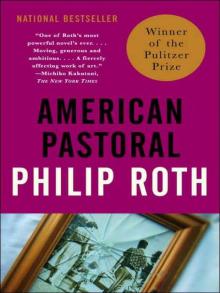 American Pastoral
American Pastoral The plot against America
The plot against America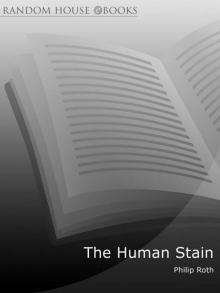 The Human Stain
The Human Stain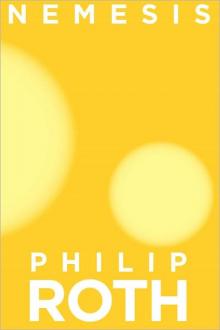 Nemesis n-4
Nemesis n-4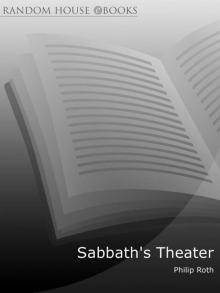 Sabbath’s Theater
Sabbath’s Theater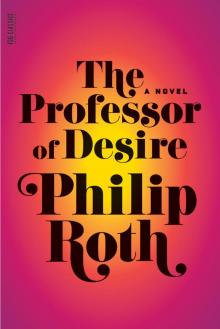 The Professor of Desire
The Professor of Desire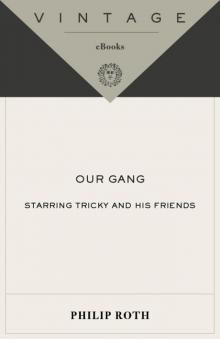 Our Gang
Our Gang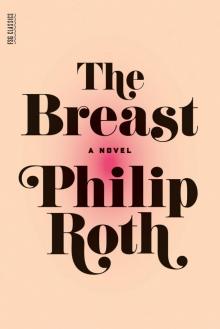 The Breast
The Breast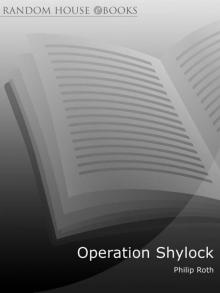 Operation Shylock
Operation Shylock The Dying Animal
The Dying Animal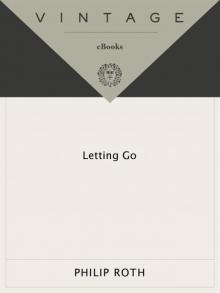 Letting Go
Letting Go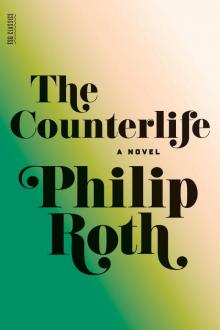 The Counterlife
The Counterlife Everyman
Everyman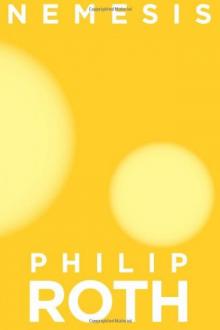 Nemesis
Nemesis Exit Ghost
Exit Ghost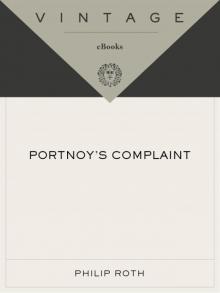 Portnoy's Complaint
Portnoy's Complaint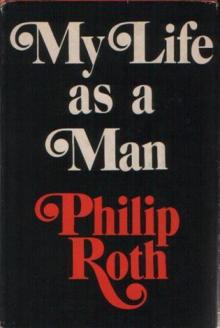 My Life as a Man
My Life as a Man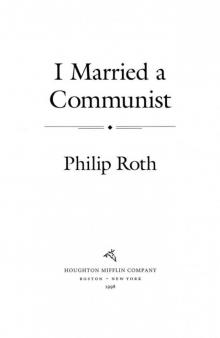 I Married a Communist
I Married a Communist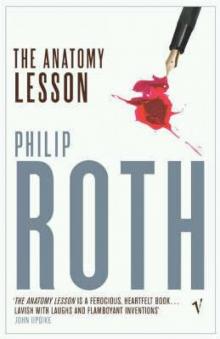 The Anatomy Lesson
The Anatomy Lesson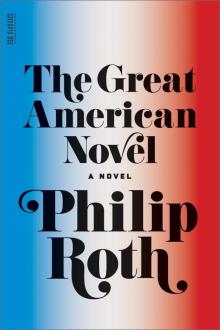 The Great American Novel
The Great American Novel Shop Talk
Shop Talk The Humbling
The Humbling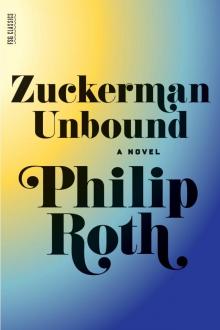 Zuckerman Unbound
Zuckerman Unbound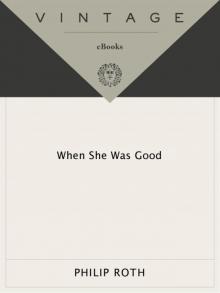 When She Was Good
When She Was Good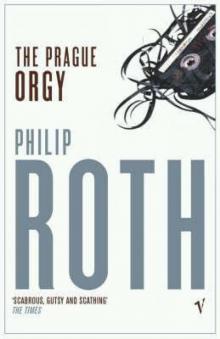 The Prague Orgy
The Prague Orgy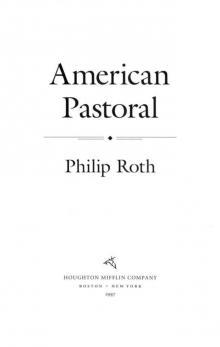 American Pastoral (Nathan Zuckerman)
American Pastoral (Nathan Zuckerman) Goodbye, Columbus
Goodbye, Columbus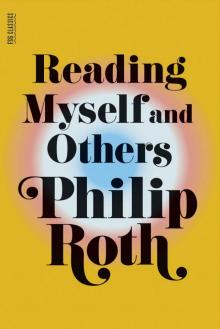 Reading Myself and Others
Reading Myself and Others